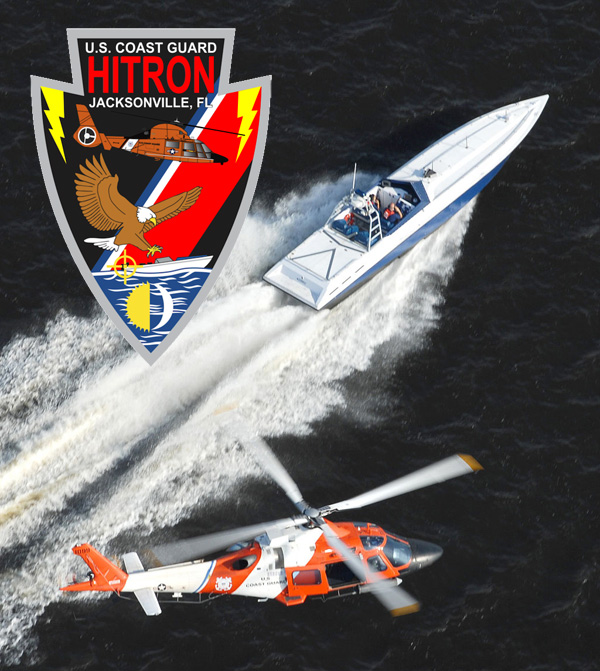U.S. Coast Guard Helicopter Interdiction Tactical Squadron is Sea-Going Drug Smuggler’s Worst Nightmare
By Space Coast Daily // August 23, 2020
armed U.S. Coast Guard helicopter squadron specializing in Airborne Use of Force and drug-interdiction missions

(U.S. COAST GUARD) – In 1998, the Coast Guard estimated that it was stopping less than ten percent of the illegal drugs entering the United States by sea. Spurred by these estimates, Admiral James Loy, the then Commandant, directed the Coast Guard to develop a plan to counter the go-fast boats used for smuggling drugs.
Early in the program’s development, HITRON proved just how effective its methods were with a 100% stopping rate of go-fast vessels detected during their first operational patrol.
The aviation detachment successfully interdicted 3,014 pounds of cocaine, 11,710 pounds of marijuana, and detained 20 suspected smugglers.
In the fiscal year 1999, the $10 million investment in this program returned $130 million in seized drugs.
The urges to counter go-fast boats used for smuggling drugs gave rise to Helicopter Interdiction Tactical Squadron, a small operation beginning with just two pilots and eight gunners.
When conducting counter-drug operations, HITRON aircrews will deploy aboard Coast Guard cutters for 30 to 60 deployments. While on deployment, go-fast boats are searched for not only by the HITRON helicopter but also by shore-based maritime patrol aircraft (MPA) such as the Coast Guard HC-130J Hercules.
If an MPA locates a go-fast, the HITRON crew will launch from the cutter to intercept it.
The crew will approach the suspect vessel with weapons trained on the vessel for self-protection. The helicopter crew will confirm the nationality or lack of nation status and whether the vessel is in fact a suspect smuggling vessel.
The aircrew will then attempt to convince the boat crew to stop through the use of sirens, loudspeakers, visual hand signals, and radio communications in both English and Spanish.
If the vessel stops during this phase, it will be boarded and searched by a boarding team from the cutter which accompanies the chase in an over-the-horizon pursuit boat and is vectored to the scene by the HITRON crew. If the vessel is found to be carrying drugs, the boarding team will take appropriate law enforcement action.
If the suspect vessel fails to stop after numerous visual and verbal warnings, the helicopter crew will take up a firing position alongside the go-fast and the aerial gunner will fire warning shots across their bow with the mounted M240 machine gun to further compel them to stop.
If the warning shots do not convince the suspects to stop, the gunner will attempt to disable the vessel by shooting out its engines with a .50 caliber precision rifle.
Go-fasts usually have multiple outboard engines and the gunner will continue to fire into these engines until the suspects stop or they are forced to stop. Once the vessel is stopped, it will be boarded by the over-the-horizon boat’s boarding team.















